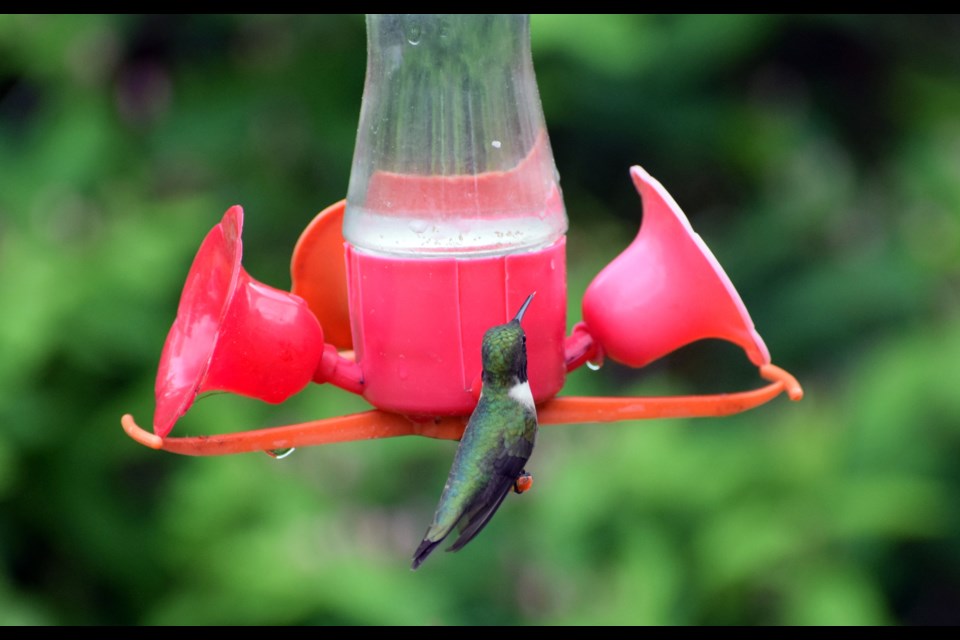Monica carries the long red cylindrical tube to the adjacent white cedar tree. Using the mauve GMC, they had parked the Citation in Site 11 with part of this in mind.
It was getting on in the season, but there just could be a late resident who might appreciate the offering. The red tube contains liquid gold. A ratio of one to four; sugar to water should do the trick.
Three other campers had decided to go on a long trek along the Manitoulin shore to an area with the colloquial name of “Whimbrel point.” They would be gone for hours looking for obscure things. Monica, however, had better plans. With a good book to snuggle into and a comfortable chair to sit in, all she had to do was wait and see if the red tube would do the trick.
There is only one regular species in this group that visits and breeds in our area. Arriving in spring in late April and early May, these small green gems are considered the only bird that can fly backwards if it needs to.
Ruby-throated hummingbirds are so small they are sometimes mistaken for a large bug as they buzz by a busy gardener intent on their plants. If a camera is in tow, the action of holding up the lens, auto focusing and clicking may be far too long to capture a hummer on its visits to various brightly coloured nectar carrying flowers.
A clever photographer might set up a camera on a tripod and second guess where the bird will feed. Males arrive in spring and will do a figure-eight type flight to attract the attention of the less colourful female. Like the name implies, males have a rich ruby-red throat patch that looks black in the shade and iridescent in the sun.
After mating, the female is left to incubate the two eggs in the small nest on her own. The young are fed a diet of nectar and small insects such as gnats and mosquitos and small spiders. Birds tend to be solitary and males will defend feeding areas as well as territories.
It is not unusual to see hummers constantly chasing each other off when providing tube feeders in the garden. Natural food sources are a way of attracting the species to your area so planting tall flowers with many brightly coloured fluorescents should work.
In September, the last of the hummers are fattening up for the long hall south. During cold evenings, they can go into torpor to conserve body fuel. Like human snowbirds, they need hot climates, so they over winter in Central and South America.
Later in the day, the three trekkers return from their two-hour walk in the hot sun. Monica has a serene smile on her face as we approach the camp site.
“Yes, I have been enjoying the sunlight with a cool drink, and a great book, but more importantly I have a visitor,” she says.
We raise our sweating heads, place our devices on the picnic table and focus our eye towards the free hanging red tube. There on one of the four small perches, near the small yellow flower symbols, is a female ruby-throated hummingbird.
She extracts her small narrow tongue just enough for us to see the sun reflect off the shiny surface as it goes back into the mouth, no doubt savouring the liquid gold.
Chris [email protected]Blomme is an executive member of the Sudbury Ornithological Society and works with animals at Laurentian University. Have a question for Chris? Send it to [email protected].
